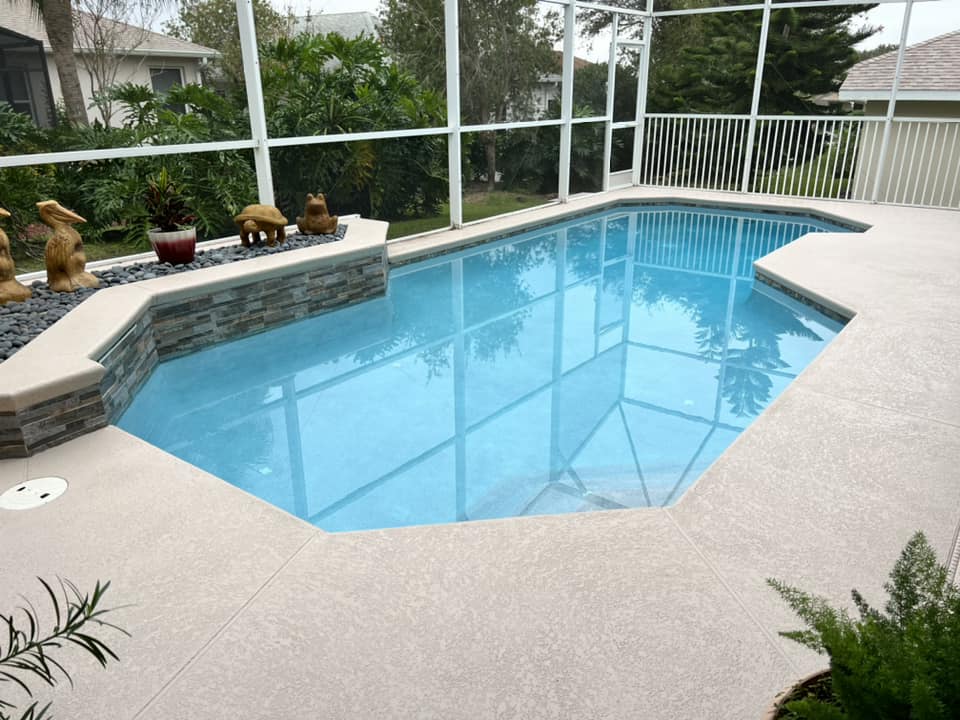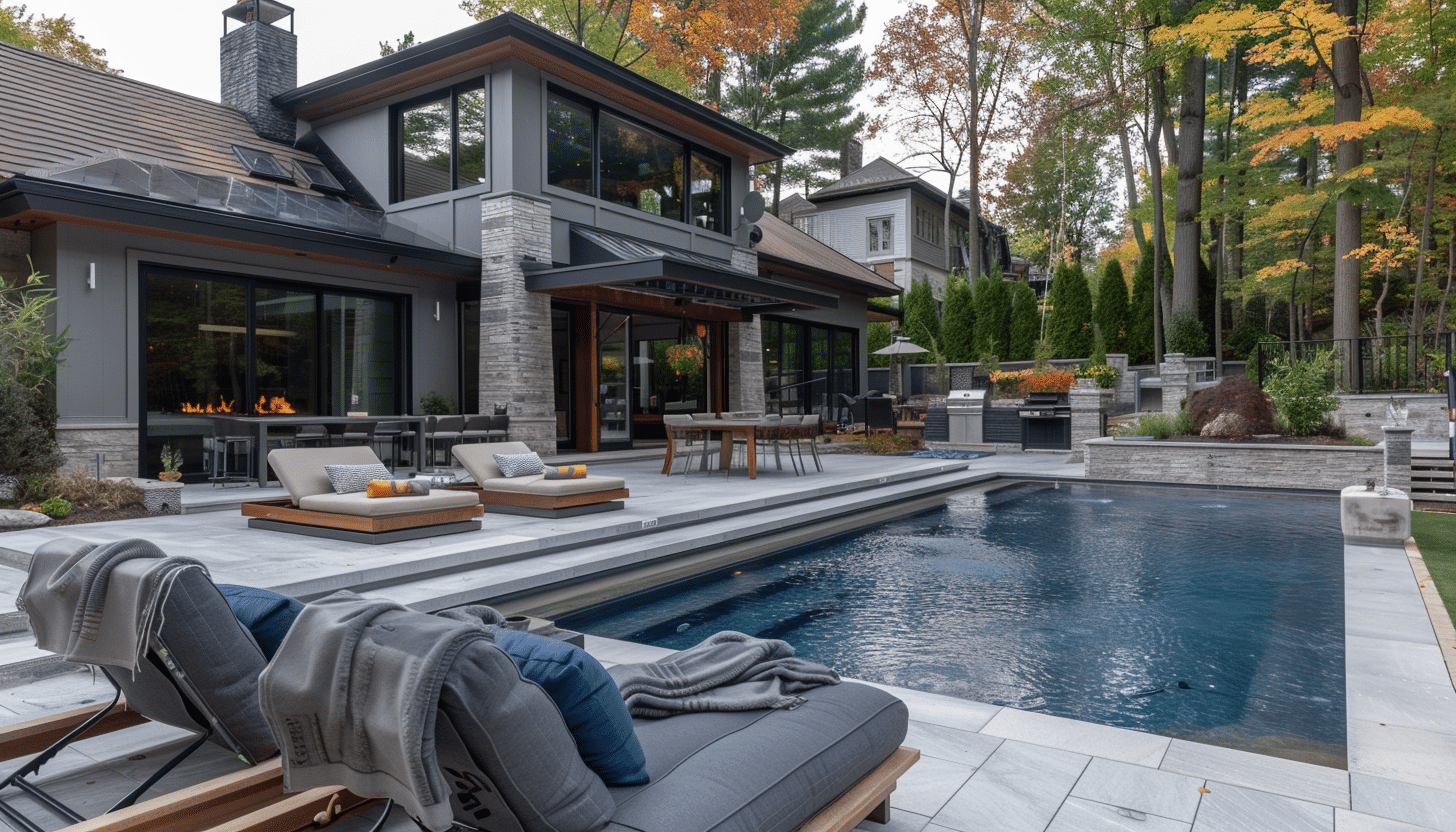Maintaining a swimming pool can often be challenging, especially when it comes to addressing repairs that typically require draining the pool. However, there are innovative methods to repair your pool without the hassle and expense of completely draining it. This guide will explore these techniques, ensuring your pool remains a pristine oasis of fun and relaxation.
Understanding Pool Repair Needs
Identifying Common Problems
Before you can repair your pool, it’s essential to understand the common issues that might not require draining:
- Surface Cracks: Small surface cracks in your pool can be fixed using waterproof sealants.
- Tile Repairs: Loose or damaged tiles can often be repaired or replaced without the need to drain the pool.
Why Drain-Free Repairs?
Conservation and Cost Draining a pool not only wastes thousands of gallons of water but also significantly increases your water bill and can lead to further complications such as:
- Structural Damage: Removing water from a pool can cause structural damage due to the pressure change.
- Environmental Impact: Wastage of water is a critical concern in areas facing drought conditions.
Benefits of Drain-Free Pool Repairs
| Benefit | Description |
|---|---|
| Water Conservation | Saves large amounts of water typically used in refilling |
| Cost Efficiency | Reduces water bills and prevents potential damage repairs |
Common Pool Issues and Drain-Free Solutions
Repair Strategies Without Draining For various common pool issues, here are drain-free solutions that can be employed:
- Leak Patching: Special underwater compounds can be used to patch leaks.
- Crack Filling: Epoxy or rubber-based fillers can repair cracks underwater.
List of Tools and Materials Needed:
- Waterproof epoxy or rubber-based filler
- Underwater adhesive for tiles
- Flexible sealants for plumbing repairs
Step-by-Step Guide to Repair Your Pool
DIY Friendly Techniques
- Step 1: Clean the affected area thoroughly.
- Step 2: Apply the appropriate underwater adhesive or filler.
- Step 3: Allow adequate time for the repair to set and cure.
Steps and Recommendations
| Step | Action | Recommended Product |
|---|---|---|
| 1 | Clean the area | Pool cleaning agent |
| 2 | Apply adhesive/filler | Waterproof epoxy |
| 3 | Cure and set | Wait 24-48 hours |
Professional Insights on Drain-Free Repairs
Expert Opinions According to professionals, while DIY solutions are feasible for minor issues, significant repairs should be handled by certified technicians to ensure safety and effectiveness.
Maintaining Your Pool Post-Repair
Regular Maintenance Tips
- Routine Checks: Regularly inspect for any new damage or recurring issues.
- Chemical Balance: Keep your pool’s chemical levels in check to prevent further material degradation.
Maintaining Your Pool Post-Repair
After completing a drain-free repair, it’s crucial to follow up with proper maintenance to ensure the longevity of your repairs and the overall health of your pool. Here are essential tips to maintain your pool in top condition:
Routine Maintenance Checklist:
- Weekly Chemical Balancing: Test and adjust your pool’s pH, chlorine, and alkalinity levels weekly to maintain water quality and prevent damage to the pool surface.
- Monthly Inspections: Check for signs of wear or damage, especially in previously repaired areas.
- Seasonal Deep Cleaning: Schedule a professional deep cleaning to address areas that are difficult to maintain through regular upkeep.
Pool Maintenance Schedule
| Maintenance Task | Frequency | Notes |
|---|---|---|
| Chemical Balancing | Weekly | Essential for water quality |
| Inspections | Monthly | Focus on structural integrity |
| Deep Cleaning | Seasonally | Professional cleaning recommended |
Professional Insights on Drain-Free Repairs
Industry experts often emphasize the importance of professional evaluation for pool repairs. While minor fixes can be DIY, major issues should be assessed by professionals to ensure comprehensive repair and safety. Here are some insights from professionals:
- Assessment Before Repair: A thorough inspection by a certified pool technician can identify underlying issues that might not be apparent to a non-professional.
- Choosing the Right Materials: Professionals can recommend the best long-lasting materials suitable for your specific pool type.
List of Recommended Professional Services:
- Leak detection and repair.
- Structural integrity assessments.
- Custom material solutions tailored to your pool.
Enhancing Pool Longevity Through Preventive Measures
In addition to addressing immediate repair needs, enhancing the longevity of your pool through preventive measures is crucial. This proactive approach can help you avoid frequent repairs, maintaining the beauty and functionality of your pool for years to come.
Proactive Strategies for Pool Longevity:
- Regular Water Testing: Ensure your pool’s water chemistry is consistently balanced. Imbalances can accelerate wear and tear on pool surfaces and equipment.
- Protective Coatings: Apply protective coatings to your pool’s surfaces to guard against UV damage, staining, and algae growth.
- Cover Your Pool: When not in use, covering your pool can significantly reduce debris accumulation and lessen the strain on your filtration system.
Preventive Maintenance Tips
| Strategy | Benefit | Implementation |
|---|---|---|
| Water Testing | Extends surface life | Test weekly and adjust as necessary |
| Protective Coatings | Prevents UV and chemical damage | Apply annually |
| Pool Cover | Reduces cleaning needs | Use daily when the pool is not in use |
Advantages of Technology in Pool Maintenance
Modern technology offers various tools and systems that can simplify pool maintenance and enhance the effectiveness of repairs. Incorporating these technologies can save time, reduce costs, and improve the overall pool experience.
Technological Innovations in Pool Care:
- Automated Pool Cleaners: These devices can handle the daily cleaning of your pool, ensuring it remains debris-free without constant manual effort.
- Smart Water Monitors: Install sensors that continuously monitor water quality and alert you to imbalances via a smartphone app.
- Energy-Efficient Pumps: Upgrading to energy-efficient pumps can reduce energy consumption and operating costs while also providing more consistent water circulation.
Conclusion
By integrating these preventive measures and embracing technological advancements, you can significantly enhance the efficiency, enjoyment, and lifespan of your pool. Regular upkeep, combined with smart innovations, ensures that your pool remains a sustainable and delightful feature of your home. For personalized recommendations and advanced solutions, consulting with a pool professional is always advisable to tailor approaches specifically to your pool’s needs and local climate conditions.
FAQs
How long do drain-free repairs last?
With proper application, drain-free repairs can last several years, depending on the materials used and the condition of the pool.
Can all types of pools be repaired without draining?
Certain repairs can be done without draining on most types of pools, including concrete and vinyl. However, fiberglass pools may require different techniques.
Is it safe to swim immediately after a repair?
It is recommended to wait at least 24-48 hours after the repair has been completed to ensure the materials have fully cured.
What are the risks of DIY pool repairs?
While DIY can be cost-effective for minor issues, incorrect repairs can lead to more significant problems, such as worsening leaks or structural damage, which might be more costly in the long run.
How often should a pool be professionally inspected?
It’s recommended that your pool be inspected professionally at least once a year or more frequently if it is subject to heavy use or harsh environmental conditions.
Are there environmental benefits to drain-free pool repairs?
Yes, drain-free repairs significantly reduce water wastage, which is crucial in drought-prone areas. Additionally, they minimize the chemical imbalance in local waterways caused by large-scale water replacement in pools.
Can technology replace manual pool maintenance?
While technology can significantly aid in maintaining a pool, regular manual inspections are crucial for addressing areas that automated systems may miss.
What is the best time of year to conduct major pool repairs?
The best time for major repairs is typically during the off-season when the pool is used less frequently. This timing helps avoid disruption during peak usage periods.
How can I make my pool more environmentally friendly?
Use solar heaters, install energy-efficient pumps, and opt for saltwater systems, which are less harsh on the environment than traditional chlorine pools.






